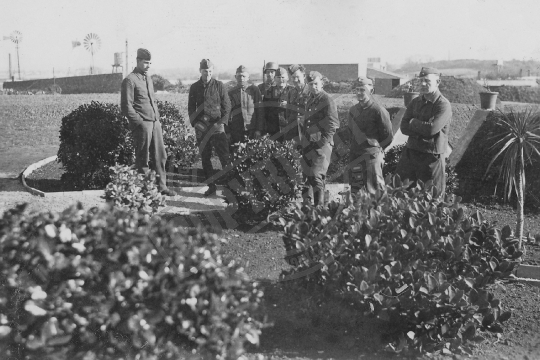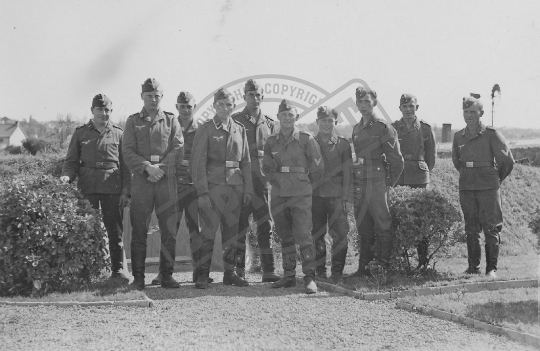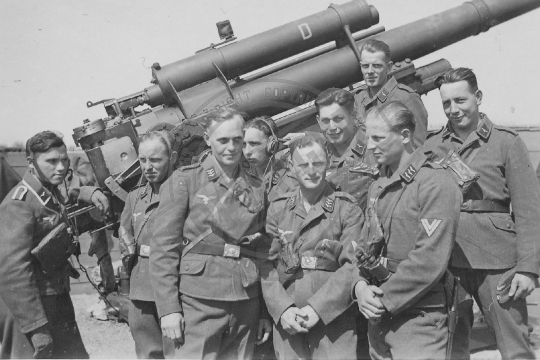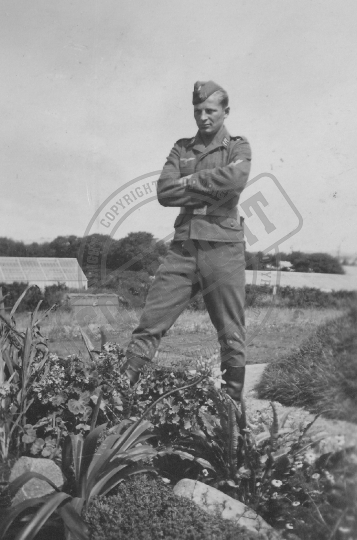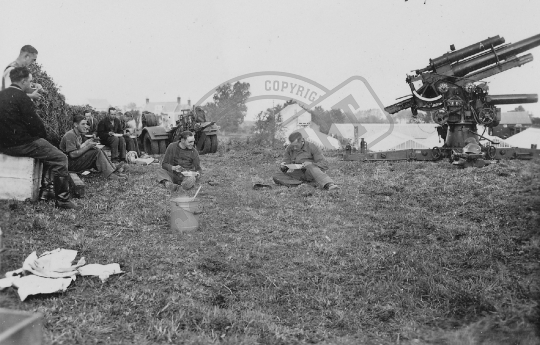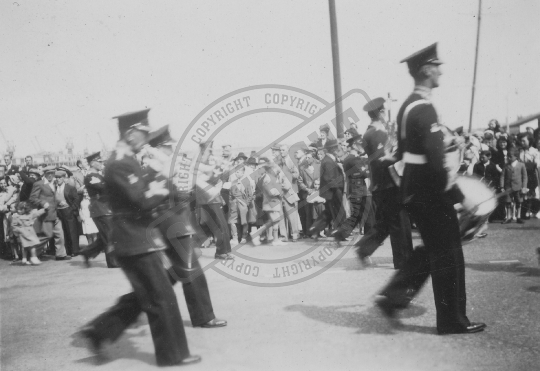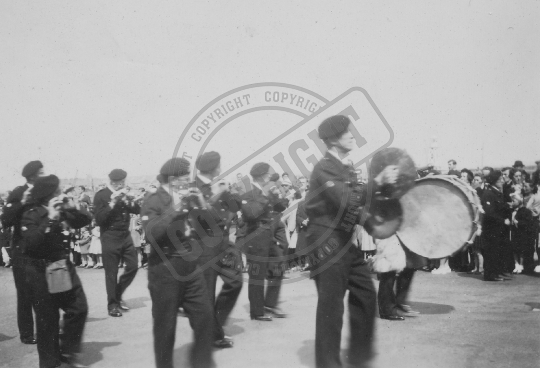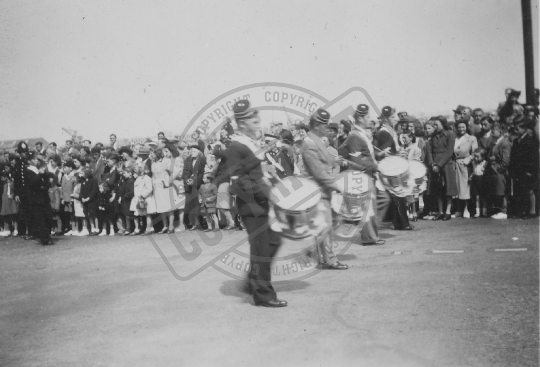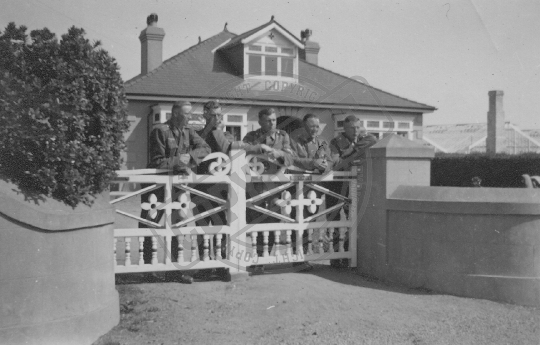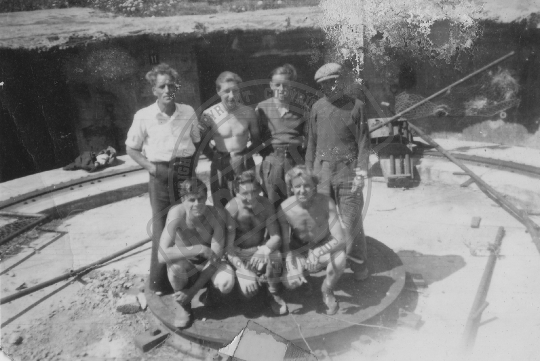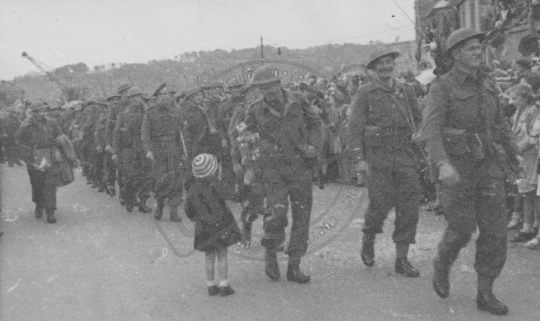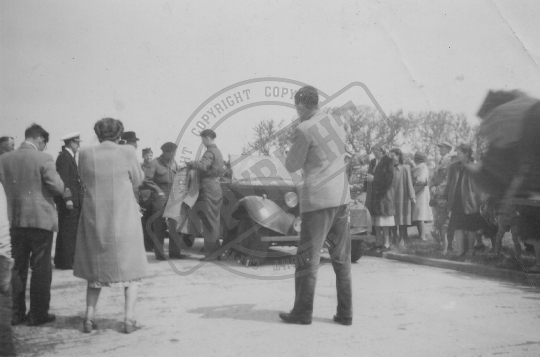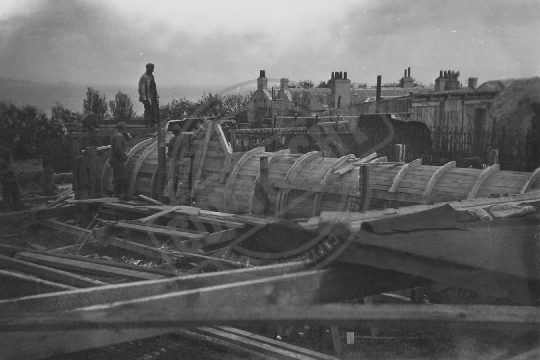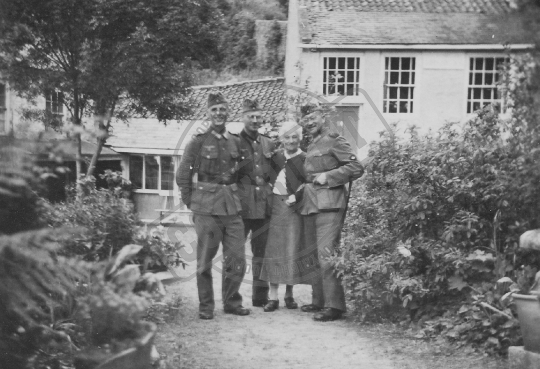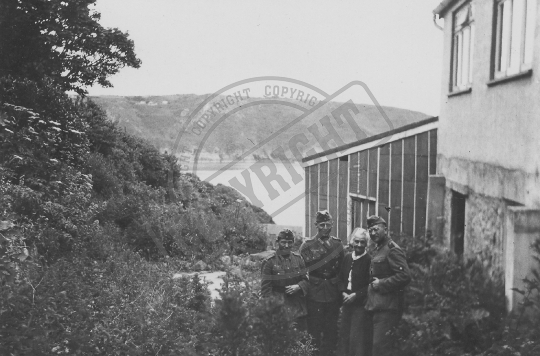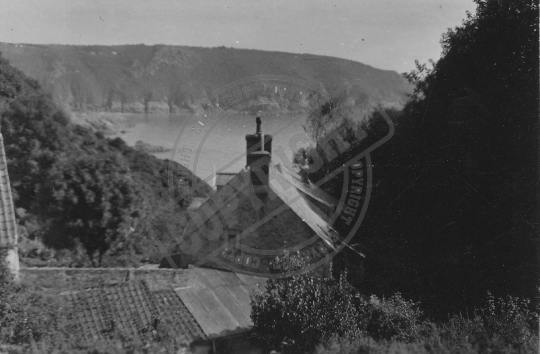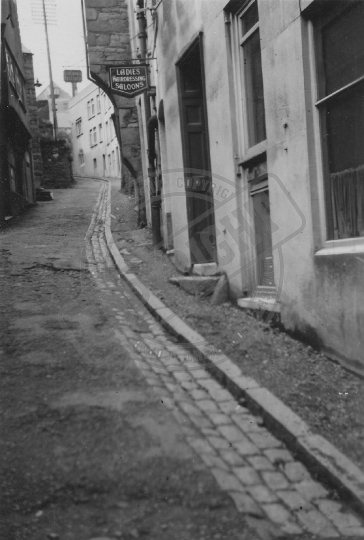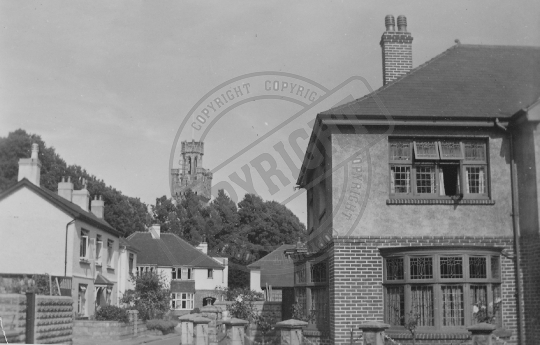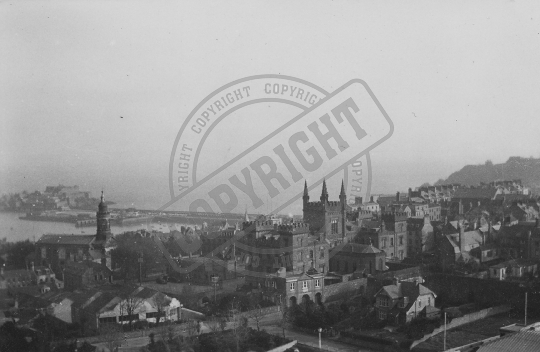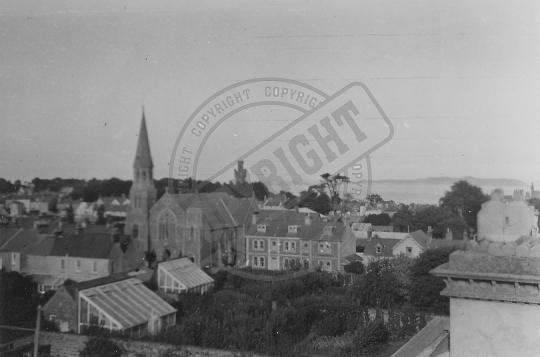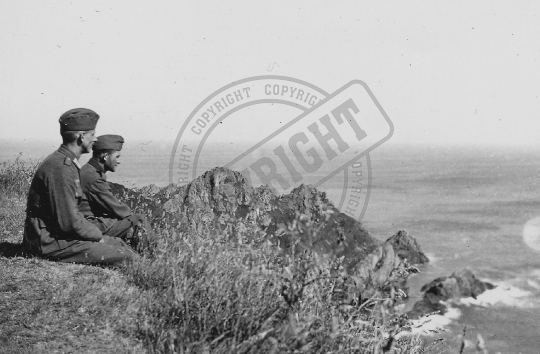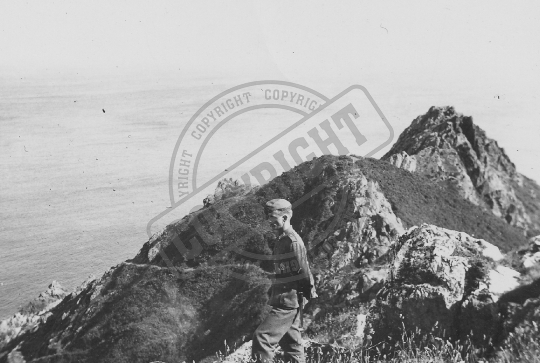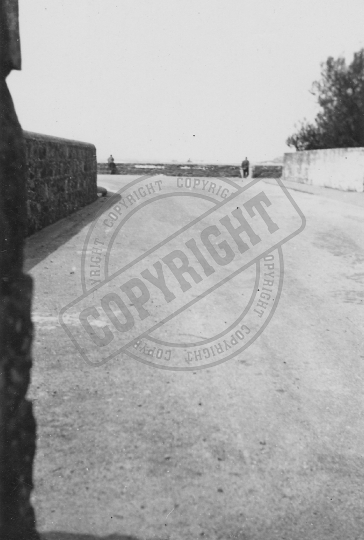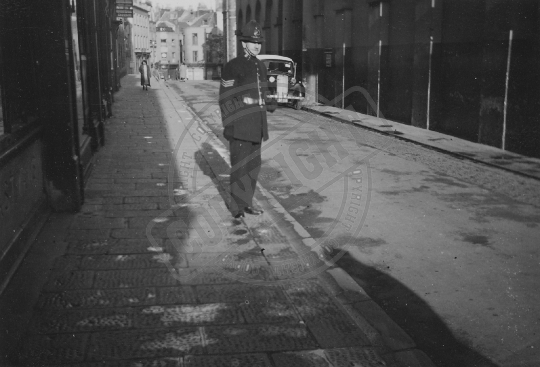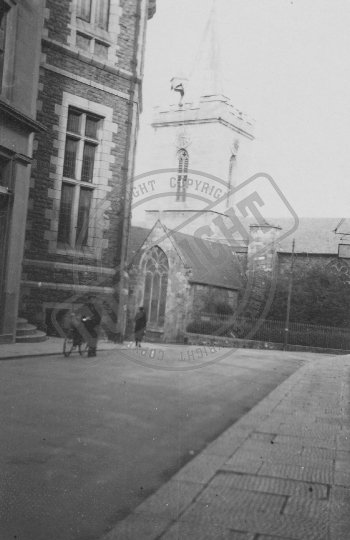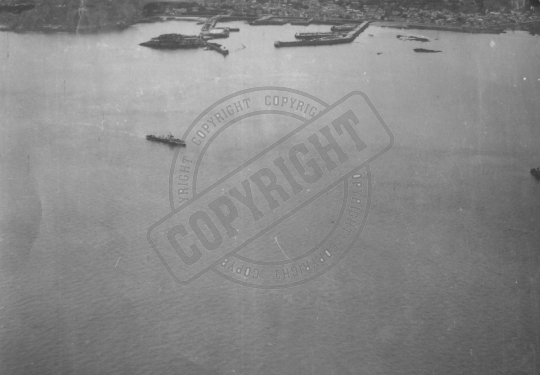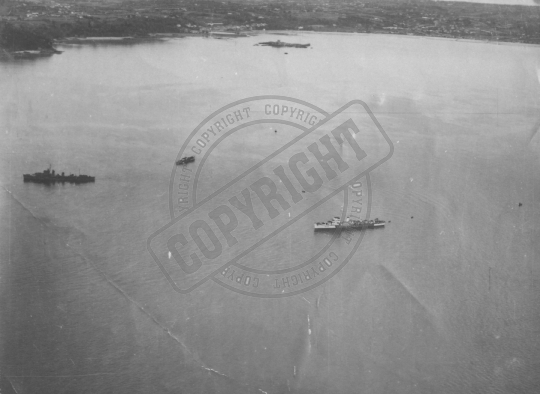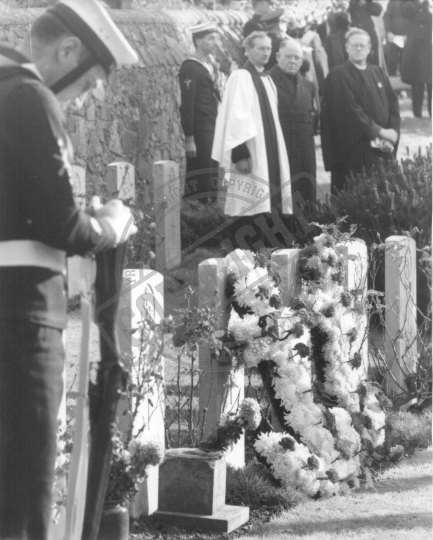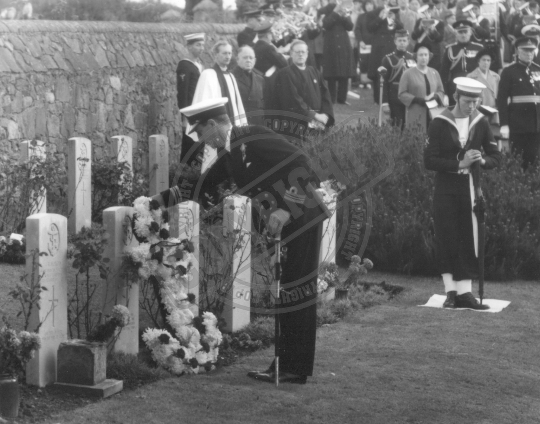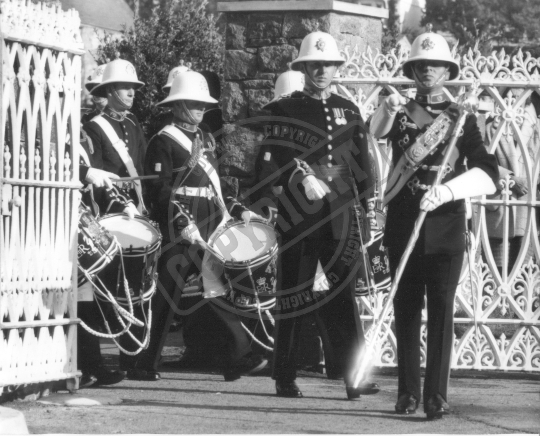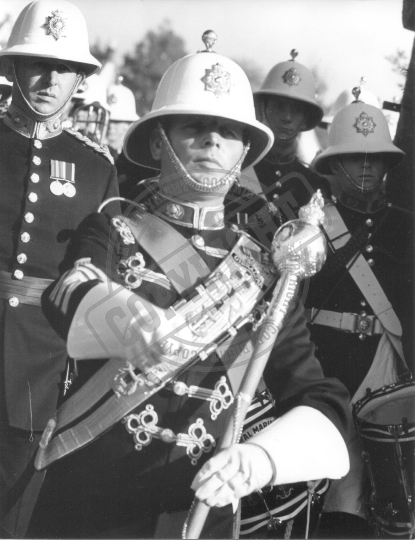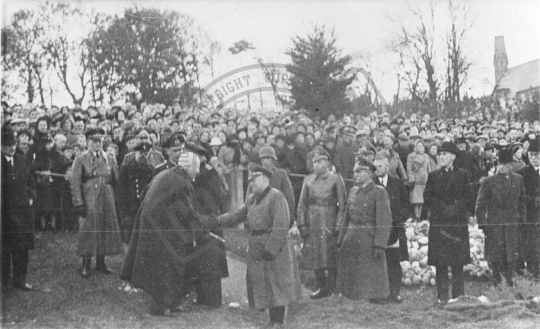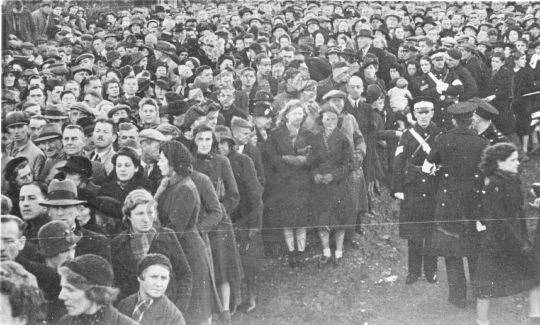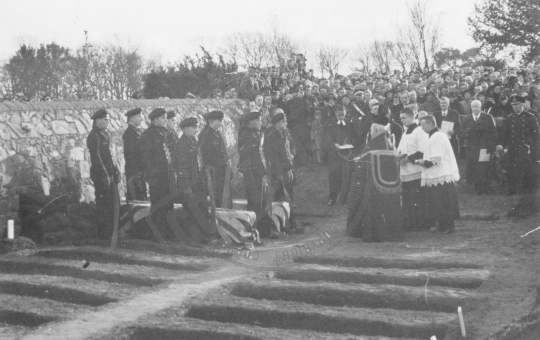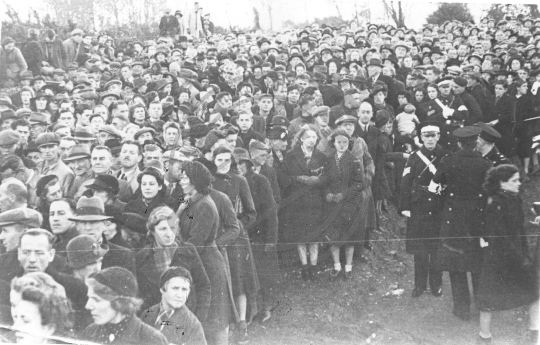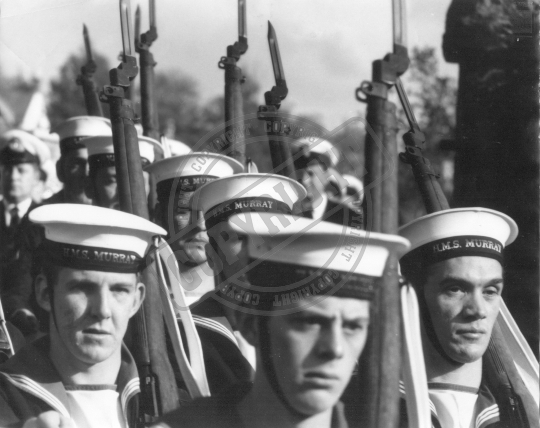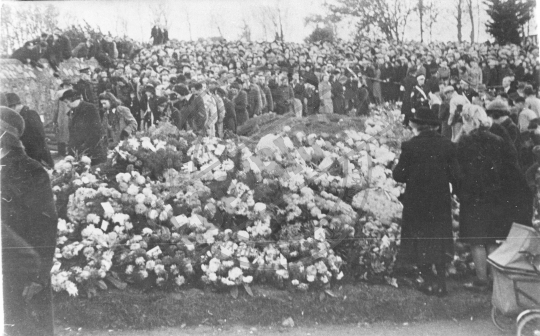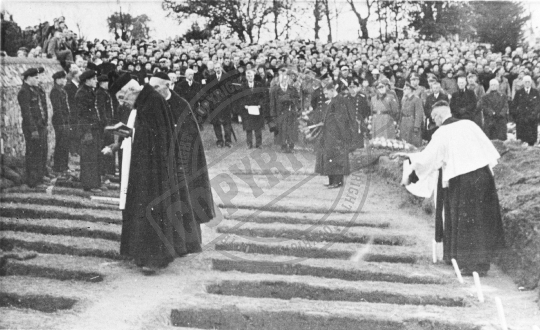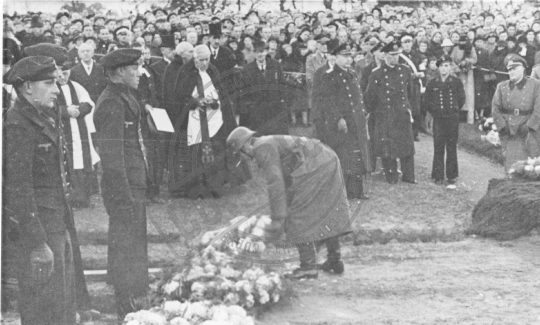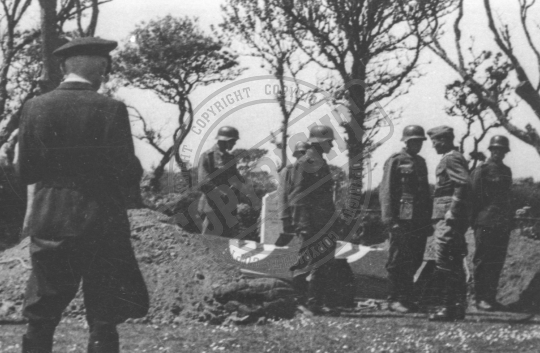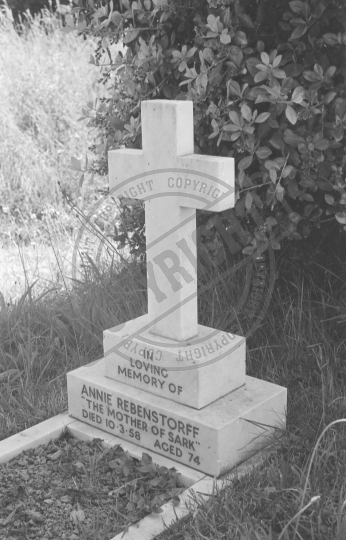Results (598)
SP_0034.jpg
The gun crew of Flak Batterie Kapellendorf located off Les Grandes Capelles in St Sampson. This battery of four 8.8cm Flak 18 guns which were used in an anti-aircraft role. This sequence of photographs were taken in December 1941.
SP_0033.jpg
The gun crew of Flak Batterie Kapellendorf located off Les Grandes Capelles in St Sampson. This battery of four 8.8cm Flak 18 guns which were used in an anti-aircraft role. This sequence of photographs were taken in December 1941.
SP_0032.jpg
The gun crew of Flak Batterie Kapellendorf located off Les Grandes Capelles in St Sampson. This battery of four 8.8cm Flak 18 guns which were used in an anti-aircraft role. This sequence of photographs were taken in December 1941.
SP_0031.jpg
Flak Batterie Kapellendorf located off Les Grandes Capelles in St Sampson. This battery of four 8.8cm Flak 18 guns which were used in an anti-aircraft role. This sequence of photographs were taken in December 1941.
SP_0030.jpg
Flak Batterie Kapellendorf located off Les Grandes Capelles in St Sampson. This battery of four 8.8cm Flak 18 guns which were used in an anti-aircraft role. This sequence of photographs were taken in December 1941. Note the trailer for moving the gun in the background.
MT_0009
Big crowds gather on Liberation Day on May 9th 1946 to watch the procession in St Peter Port.
MT_0008
Big crowds gather on Liberation Day on May 9th 1946 to watch the procession in St Peter Port.
MT_0007
Big crowds gather on Liberation Day on May 9th 1946 to watch the procession in St Peter Port.
MT_0001
German army personnel relaxing outside a requisitioned property called The Croft in Les Canus, St Sampson formerly owned by Mrs Ruaux who was evacuated in 1940. This is a typical example of troops being billeted in local properties.
MT_0004
Victor Gontier a former internee at Laufen, seen here circa 1948 with a team from Gilroy’s which were engaged in backfilling trenches and salvaging scrap at Batterie Dollmann, Pleinmont.
MT_0003
A view of the Careening Hard at half tide, note the bomb and shrapnel damage on the raised walkway just before the end of the pier resulting from the air raid on the evening of 28 June 1940.
MT_0002
Marching past the former White Heart Hotel sited opposite the Weighbridge, a young girl presents a pose of flowers to one of Guernsey’s Liberators on the occasion of the islands freedom on 9 May 1945.
MT_0006
Two years after Liberation on 23rd May 1947 Guernsey had a special visit from Field Marshall Bernard Montgomery (Monty). During his visit he met with many dignitaries including those from Elizabeth College, St John Ambulance, Sea Scouts and many others. His tour was welcomed by all with the streets of Guernsey lined with locals wanting to catch a glimpse of Monty. His famous vehicle known as Old Faithful carried him around the island and included a stop at the grounds of Beau Sejour.
MT_0005
Two years after Liberation on 23rd May 1947 Guernsey had a special visit from Field Marshall Bernard Montgomery (Monty). During his visit he met with many dignitaries including those from Elizabeth College, St John Ambulance, Sea Scouts and many others. His tour was welcomed by all with the streets of Guernsey lined with locals wanting to catch a glimpse of Monty. His famous vehicle known as Old Faithful carried him around the island and included a stop at the grounds of Beau Sejour.
OA_106
Shuttering and huge quantities of steel reinforcing surround construction workers as they prepare one of the many fortifications prior to concrete being poured in the grounds of Fort George.
OA_105
Shuttering and huge quantities of steel reinforcing surround construction workers as they prepare one of the many fortifications prior to concrete being poured in the grounds of Fort George.
OA_104
A local police sergeant and civilian photographed with German soldiers outside the old Police Station located opposite St Pauls Church. The church was subsequently demolished and is now the site of the Sunken Garden.
OA_103
German soldiers with a local resident at entrance to the former Moulin Huet Watermill, one of the properties alongside the road leading down to Moulin Huet Bay.
OA_102
German soldiers with a local resident at one of the properties alongside the road leading down to Moulin Huet Bay with Jerbourg headland and the beach of Petit Port in the distance.
OA_101
Looking across the roof of the former Moulin Huet Watermill, sited alongside the road leading down to Moulin Huet Bay with Jerbourg headland and the beach of Petit Port at low water in the distance.
OA_100
A view from the foot of Bertholet Street looking up the steeply graded hill that emerges onto New Street.
OA_099
With Victoria Tower in the background a view of properties in Town taken by the entrance to The Close by Doyle Road.
OA_098
A view across the roof tops of St Peter Port from Victoria Tower, with the spire of St James seen left, the square towers of Elizabeth College on the right and Castle Cornet in the far distance.
OA_097
Taken from the roof of a house near the junction of Les Gravees and Queens Road looking towards the spire of St Jospephs Methodist Church and Victoria Tower in the far distance.
OA_096
Taken from the roof of a house near the junction of Les Gravees and Queens Road looking towards the spire of Notre Dame Roman Catholic Chapel and convent.
OA_095
Enjoying a stroll around Guernsey’s southern cliffs a group of Germans stop for a rest near Moulin Huet by Dog and Lion Rocks with the small harbour at Saints Bay seen in the background.
OA_094
Two German soldiers stop to enjoy the views on the cliifs just west of Pointe De La Moye which can be seen in the background.
OA_093
A German soldier stands on the coastal footpath leading to Pointe De La Moye looking east towards Les Sommeilleuses.
OA_092
A German soldier relaxes on a rock outcrop sited on the coastal footpath leading to Pointe De La Moye with Icart headland in the background.
OA_091
Taken at Route de Cobo near Bouverie Lane looking towards Cobo Coast Road note, the white lines painted on the sea wall to aid drivers during the night in blackout conditions.
OA_090
A local police sergeant photographed by a German soldier in Market Street looking towards the steps that led to the Commercial Arcade.
OA_089
A typical stop for German troops seeking propaganda photographs featuring British institutions here outside Lloyds Bank located at the foot of Smith Street leading to the Pollet.
OA_088
At the foot of Fountain Street civilians are photographed going about their business, note the cyclist making their way up the road keeping to the right hand side.
SP_0029
HMS Bulldog (Destroyer) H 91 off St Peter Port, Guernsey, on Wednesday morning, 9th May, 1945.
SP_0028
Off St Aubin’s Bay, Jersey on Wednesday afternoon, 9th May, 1945. HMS Cosby (Frigate) K 559, LCI(L) 130 carrying the Force 135 'Omelette advance party’, and HMS Beagle (Destroyer) H 30.
TPL_00173
Funeral service for Royal Navy victims of HMS Charybdis and HMS Limbourne who were buried with full military honours at Le Foulon Cemetery.
TPL_00172
Funeral service for Royal Navy victims of HMS Charybdis and HMS Limbourne who were buried with full military honours at Le Foulon Cemetery.
TPL_00171
Funeral service for Royal Navy victims of HMS Charybdis and HMS Limbourne who were buried with full military honours at Le Foulon Cemetery.
TPL_00170
Funeral service for Royal Navy victims of HMS Charybdis and HMS Limbourne who were buried with full military honours at Le Foulon Cemetery.
TPL_00168
Funeral service for Royal Navy victims of HMS Charybdis and HMS Limbourne who were buried with full military honours at Le Foulon Cemetery.
TPL_00167
Funeral service for Royal Navy victims of HMS Charybdis and HMS Limbourne who were buried with full military honours at Le Foulon Cemetery.
TPL_00166
Funeral service for Royal Navy victims of HMS Charybdis and HMS Limbourne who were buried with full military honours at Le Foulon Cemetery.
TPL_00165
Funeral service for Royal Navy victims of HMS Charybdis and HMS Limbourne who were buried with full military honours at Le Foulon Cemetery.
TPL_00164
Two soldiers who were killed when clearing their own mines immediately after the occupation are buried in the cemetery near St Peters church in Sark.
TPL_00163
Mrs Annie Rebenstorff an English born lady who married a German national and had lived in that country prior to WW1. During the Occupation she was renowned for the work she did to aid islanders in Sark, so much so she was know as 'The Mother of Sark'.



